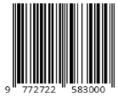Pengaruh Pemberian Dosis Pakan terhadap Pertumbuhan Benih Ikan Nila di Keramba Jaring Apung di Kabupaten Pohuwato
Abstract
Keywords
Full Text:
PDF (Bahasa Indonesia)References
BPS. 2019. "Produksi Perikanan Budidaya Menurut Kecamatan Dan Jenis Kegiatan." Kabupaten Pohuwato.
Carman, Odang, and Adi Sucipto. 2009. Panen Nila 2,5 Bulan. Edited by Odang Carman and Adi Sucipto. Cet. 1. Jakarta: Penebar Swadaya.
Effendi. 1978. "Biologi Perikanan. Yayasan Pustaka Nusantara. Yogyakarta." Evaluasi Laju Pertumbuhan Dan Sintasan Ikan Nila.
Fardiansyah. 2011. Kualitas Air Ikan Nila. Cet. 1. Jakarta.
Ghufran, H., K Kordi, and A. B Tancung. 2010. Pengelolaan Kualitas Air Dalam Budi Daya Perairan. Jakarta: Rineka Cita.
Karimah, U, I Smidjan, and Pinandoyo. 2018. "Performa Pertumbuhan Dan Kelulushidupan Ikan Nila Gift (Oreochromis Niloticus) Yang Diberi Jumlah Pakan Yang Berbeda." Journal of Aquaculture Management and Technology 7 (1): 128-35.
Khairuman, and K Amri. 2007. Budidaya Nila Secara Intensif. Jakarta: Agromedia Pustaka.
Kordi. 2010. "Buku Pintar Pemeliharaan 14 Ikan Air Tawar Ekonoi Dikeramba Jaring Apung.Andi.Yogyakrta 324 Hal." Journal of Aquaculture Management and Technology. http://download.portalgaruda.org/article.php?article=145073&val=4714.
Manunggal, K., R. Hidayat, S. Mahmudah, D Sudino, and A Kasmawijaya. 2018. "Kualitas Air Dan Pertumbuhan Pembesaran Ikan Patin Dengan Teknologi Biopori Di Lahan Gambut." Jurnal Penyuluhan Perikanan Dan Kelautan 12 (1): 11-19.
Pauji. 2007. "Klasifikasi Ikan NIla (Oreochromis Niloticus)
DOI: https://doi.org/10.37905/nj.v11i5.23932
Refbacks
- There are currently no refbacks.
Copyright (c) 2024 The NIKe Journal

This work is licensed under a Creative Commons Attribution 4.0 International License.










